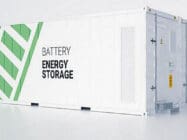
Sulphur hexafluoride (SF6) and other greenhouse gas (GHG) emissions reduction, beyond CO2 emissions, is the next frontier for urgent action in the energy sector due to their extreme potency.
With widespread commitments made to reducing CO2 emissions, attention is turning to other greenhouse gases, specifically methane and nitrous oxide as the next largest contributors. In parallel, various variants of fluorocarbons and particularly in the energy sector, SF6 with its use in switchgear and other equipment, have been put in the spotlight as significant contributors to GHG emissions.
Utilities worldwide are arguably facing the most demanding and far-reaching changes in their operations, with multiple pressures, both top-down from governments and bottom-up from grassroots consumers in addition to their own responsibilities as modern-day businesses.
Chief among these is the increased drive for renewable energies from customer-sited up to utility-scale as the only truly sustainable forms of energy. This enables the transition to a distributed customer-centric system, and the large-scale electrification of sectors such as transport and industry. With this comes integrating technologies such as storage and new IT platforms and infrastructure such as data centres and telecoms hubs.
Importantly, all of these in turn require additional switchgear to integrate and operate as grid-connected resources.
The SF6 challenge
The synthetic, odourless, and highly stable gas, SF6, has been widely used over decades in the electricity industry for insulation, current breaking, and convenience, in medium and high-voltage equipment.
The challenge of its use, which also includes semiconductor manufacturing and magnesium production, is the risk of losses during the full product lifecycle from manufacturing through use and particularly the final decommissioning and its impact on the atmosphere. For MV switchgear the leakage rate during operating life is negligible, the research presents a grim picture for end-of-life SF6 recapturing or rather lack thereof, with up to 40% of cases in some areas.
The Intergovernmental Panel on Climate Change (IPCC)’s Sixth Assessment Physical Science Basis report estimates an over 36% increase in SF6 in the atmosphere between 2011 and 2019. While the concentration is still low – 10 parts per trillion compared with 19 parts per million of CO2 in 2019 – the increase is among the largest for greenhouse gases, with the exception of some hydrofluorocarbons, which were introduced as replacements for earlier fluorocarbon derivatives for applications such as domestic refrigerators and mobile air conditioning.
In addition, the report noted a revision in the lifetime of SF6 in the atmosphere to about 1,000 years from the previous 3,200 years. However, in practice on the human and utility timescales, the impact remains unchanged and is significant.
The latest update to the report has revised the global warming potential of SF6 upwards by over 7% from the previous 100-year impact of 23,500 to 25,200, i.e. that 1kg of SF6 has the same global warming impact over a century as 25,200kg of CO2.
This increase in SF6 in the atmosphere is attributed both to the global expansion of the power industry and to increased use in the industry.
However, actual loss levels are variable depending on factors such as age, build quality, maintenance level, and even ambient environmental conditions.
Industry whitepaper: How SF6 alternatives and digital technologies collaborate to solve energy challenges
A reference value is 0.5%kg/year, which is the maximum relative leakage rate permitted for SF6 in closed pressure systems according to the IEC 62271-1:2017 standard, while studies have estimated levels as high as 15% over the full lifecycle, primarily due to users not adhering to the SF6 recapture protocol at product end of life.
Without global reporting requirements and methodologies, the levels, especially in developing countries, are likely to be significantly underestimated.
A holistic and circular approach to the energy transition
Utilities like other responsible businesses are undertaking ESG (Environmental, Social, Governance) reporting, and are developing and implementing net-zero emission plans as a primary strategic objective.
In developing such plans consideration needs to be made across all aspects of the business and to encompass all greenhouse gases.
As an example, in a report the French transmission system operator, RTE cited SF6 at 13% as one of the main contributors to its greenhouse gas emissions in 2018.
The energy transition has sustainability at its heart, both from the business and resource perspectives. This in turn demands the latest technologies and innovations across the system, even if the full benefits in the longer term are significantly reduced upfront.
For example, the full zero-emission benefits of EVs will only surface sometime in the future when there is zero emission circularity across the value chain, from the generation of the electricity used for the vehicle manufacture and battery charging to the battery being reused or recycled in a sustainable manner with regard to the raw materials and other components.
The energy transition demands the legacy approach of large centralised power systems and SF6-based switchgear in transmission and distribution to transform with the decentralised approach to renewables and distributed generation with SF6-free switchgear.
Similarly, to EVs, however, the full net-zero benefits will be realised only in time with a 100% renewables-based electricity system.
A sense of urgency
Now more than ever, time is of the essence in delivering net zero solutions with the 2030 climate targets in sight and those for 2050 not far behind.
More importantly, with the lifetime of switchgear in the field up to 40 years, new equipment installed now may still be in place well beyond the 2050 net zero emission deadline.
Another driver of new alternatives in Europe at least is the proposal to regulate SF6 in the EU rules on fluorinated greenhouse gases, currently under review. The proposal, widely expected to be approved, is an emissions reduction by two-thirds compared to 2014 levels by 2030, where the gas is no longer needed, and given the availability of alternatives starting from 2026, companies need to be prepared to avoid the financial and other losses that could ensue, should they fail to do so.
Rising innovation and support for alternative solutions
It is critical for companies to reduce their emissions across all GHGs; but where do you start in prioritising your strategies?
According to Olivier Blum, Energy Management EVP at Schneider Electric, companies should develop a roadmap that takes into account reductions across all three emission scopes and explores mitigation paths for non-CO2 GHG emissions. The most important step is to begin.
Blum outlines a step-by-step recommendation to support you on your journey to building your roadmap.
The second part of this editorial series will look at alternatives to SF6 where Schneider Electric is bringing SF6-free solutions to the market.








